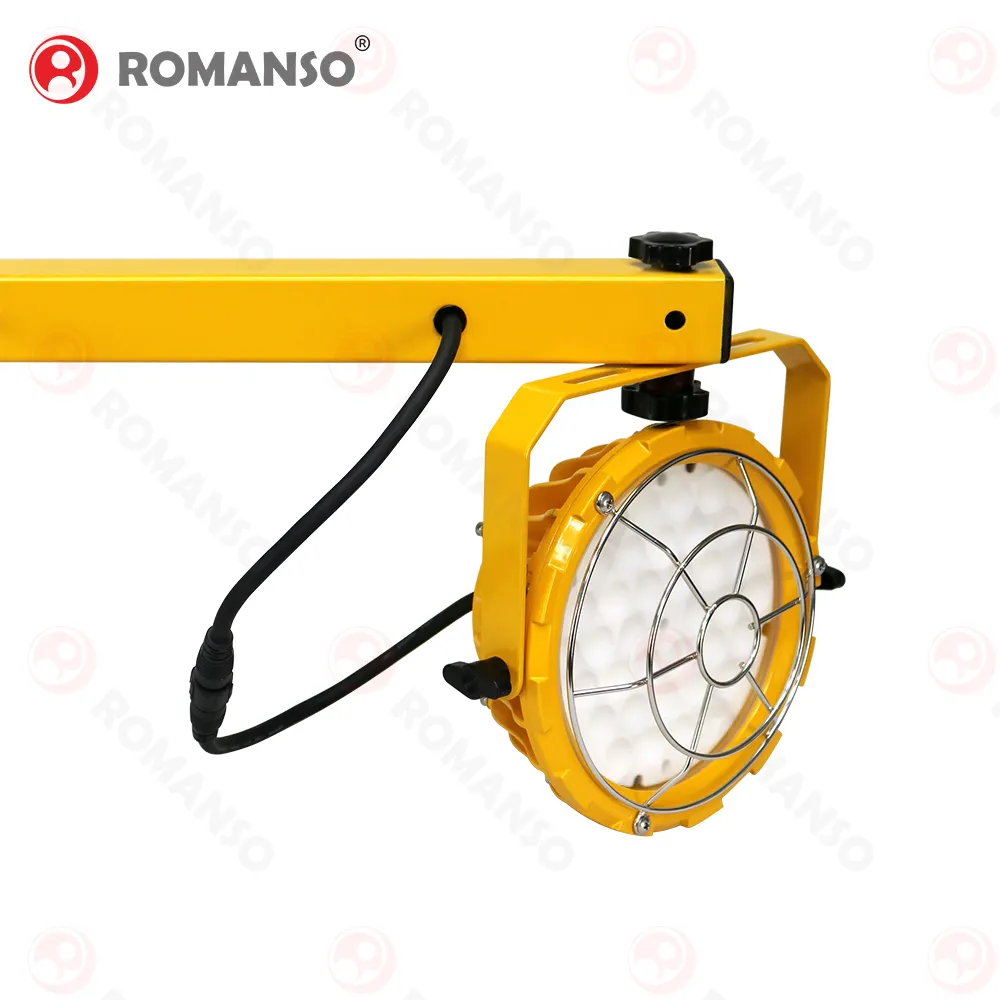Can LED Work Lighting Improve Job Site Safety?
2025
Transforming Construction Safety Through Advanced Illumination
The construction industry has witnessed a remarkable evolution in safety measures over the years, with LED work lighting emerging as a game-changing innovation. Proper illumination on job sites isn't just about visibility – it's a fundamental aspect of creating a secure working environment that protects workers and enhances operational efficiency. As construction projects become more complex and demanding, the role of LED work lighting continues to grow in importance, offering solutions that extend far beyond basic illumination.
Modern construction sites operate around the clock, making reliable and efficient lighting systems absolutely crucial. LED work lighting has revolutionized how we approach job site safety, providing superior visibility while consuming less energy and requiring minimal maintenance. This technological advancement has become an indispensable tool in preventing accidents, improving worker productivity, and ensuring regulatory compliance.
The Science Behind LED Work Lighting Technology
Advanced Optical Design and Performance
LED work lighting utilizes cutting-edge semiconductor technology to produce bright, consistent illumination. Unlike traditional lighting sources, LEDs emit light in a specific direction, reducing wasted light and energy. The precision-engineered optics ensure uniform light distribution, eliminating harsh shadows and glare that can compromise worker safety. These fixtures typically achieve color rendering indexes (CRI) above 80, allowing workers to distinguish colors accurately and identify potential hazards more effectively.
Modern LED work lighting systems incorporate sophisticated thermal management solutions, ensuring stable performance even in challenging environmental conditions. The advanced heat dissipation mechanisms prevent overheating and extend the operational lifespan of the fixtures, making them ideal for demanding construction environments.
Energy Efficiency and Environmental Impact
One of the most significant advantages of LED work lighting is its exceptional energy efficiency. These systems convert up to 90% of their energy input into light, compared to just 10% for traditional incandescent bulbs. This efficiency translates into lower operating costs and reduced environmental impact, making LED lighting a sustainable choice for construction projects of all sizes.
The durability of LED work lighting systems also contributes to their environmental benefits. With lifespans exceeding 50,000 hours, these fixtures require less frequent replacement, reducing waste and maintenance requirements. The absence of hazardous materials like mercury further enhances their eco-friendly profile.

Safety Enhancements Through Strategic Lighting Implementation
Optimal Visibility in Critical Areas
Strategic placement of LED work lighting creates well-illuminated zones that minimize accidents and improve overall site safety. High-risk areas such as stairways, equipment storage zones, and material handling areas benefit particularly from proper lighting placement. The consistent, bright illumination helps workers maintain better spatial awareness and identify potential hazards before they become safety issues.
Advanced LED work lighting systems can be customized to provide task-specific illumination levels, ensuring that different areas of the construction site receive appropriate lighting based on their specific requirements. This targeted approach enhances both safety and efficiency while optimizing energy usage.
Emergency Response and Safety Protocol Support
LED work lighting plays a crucial role in emergency situations by providing reliable illumination during power outages or other critical events. Many modern systems include backup power options and emergency lighting features that activate automatically when needed. This ensures continuous visibility for evacuation routes and emergency response activities.
The instant-on capability of LED work lighting eliminates warm-up times associated with traditional lighting technologies, providing immediate full brightness when needed. This feature is particularly valuable during emergency situations or when rapid response is required.
Practical Applications and Implementation Strategies
Mobile and Temporary Lighting Solutions
Construction sites require flexible lighting solutions that can adapt to changing work conditions. Portable LED work lighting systems provide this versatility, allowing quick repositioning as project needs evolve. These mobile units often feature rugged construction and weather-resistant designs, ensuring reliable performance in various environmental conditions.
The development of battery-powered LED work lighting has further enhanced mobility and convenience on construction sites. These cordless solutions eliminate trip hazards associated with power cables while providing hours of reliable illumination where traditional power sources may be unavailable.
Permanent Installation Considerations
For long-term construction projects, permanent LED work lighting installations offer sustained benefits. These systems can be integrated with smart controls and automation features, allowing for programmed operation and remote management. The ability to adjust lighting levels and schedules helps optimize energy usage while maintaining necessary safety standards.
Professional installation of LED work lighting should consider factors such as mounting height, beam angle, and light distribution patterns to achieve optimal coverage. Proper planning ensures compliance with safety regulations while maximizing the effectiveness of the lighting system.
Frequently Asked Questions
How does LED work lighting contribute to reduced accident rates?
LED work lighting significantly reduces accident rates by providing consistent, glare-free illumination that helps workers identify hazards, maintain better spatial awareness, and perform tasks with greater precision. The high-quality light output improves visibility in all conditions, reducing the risk of trips, falls, and equipment-related accidents.
What maintenance requirements do LED work lighting systems have?
LED work lighting systems require minimal maintenance compared to traditional lighting solutions. Regular cleaning of fixtures, occasional inspection of electrical connections, and periodic verification of mounting security are typically sufficient. The long operational life of LEDs significantly reduces the need for frequent bulb replacements.
Are LED work lighting systems worth the initial investment?
While LED work lighting systems may have higher upfront costs, they offer substantial long-term value through reduced energy consumption, minimal maintenance requirements, and improved safety outcomes. The combination of operational savings and enhanced workplace safety typically provides a positive return on investment within a few years of installation.
Can LED work lighting be used in hazardous construction environments?
Yes, specially designed LED work lighting fixtures are available for hazardous locations. These fixtures meet strict safety certifications and are constructed to prevent ignition risks in environments where flammable gases or dusts may be present. Always ensure the selected lighting equipment is appropriately rated for the specific hazard classification of the work area.

 EN
EN
 AR
AR
 BG
BG
 HR
HR
 CS
CS
 DA
DA
 NL
NL
 FI
FI
 FR
FR
 DE
DE
 EL
EL
 HI
HI
 IT
IT
 JA
JA
 KO
KO
 NO
NO
 PL
PL
 PT
PT
 RO
RO
 RU
RU
 ES
ES
 SV
SV
 CA
CA
 TL
TL
 IW
IW
 ID
ID
 LV
LV
 LT
LT
 SK
SK
 SL
SL
 UK
UK
 ET
ET
 GL
GL
 HU
HU
 MT
MT
 TH
TH
 TR
TR
 FA
FA
 MS
MS
 GA
GA




